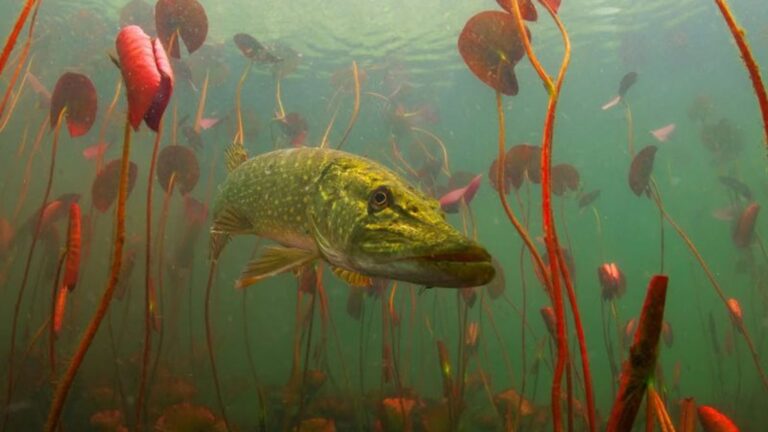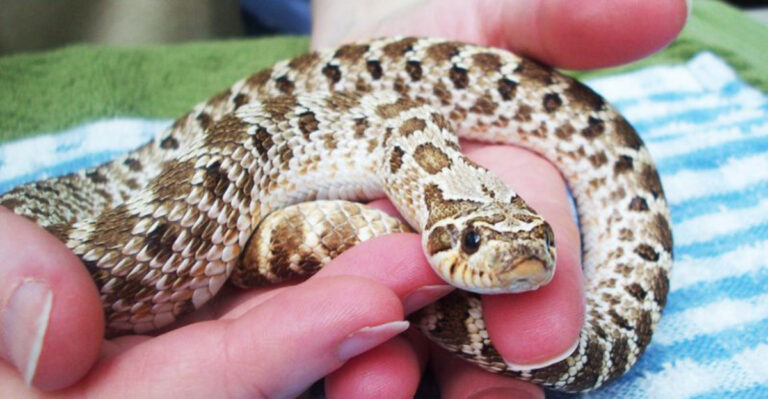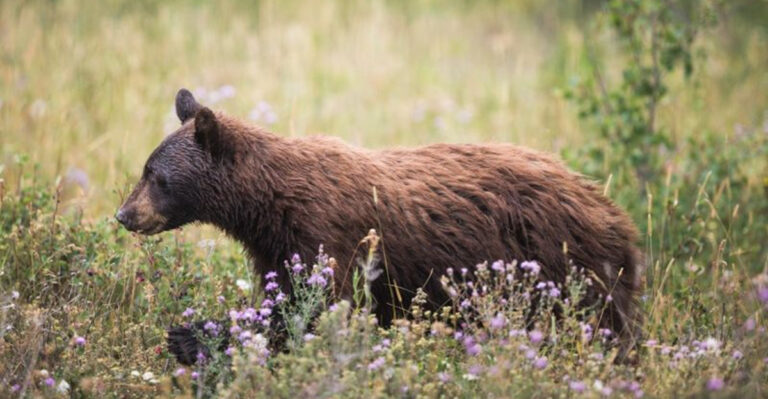15 Facts About The Giant Weta, The Bug Bigger Than A Bird
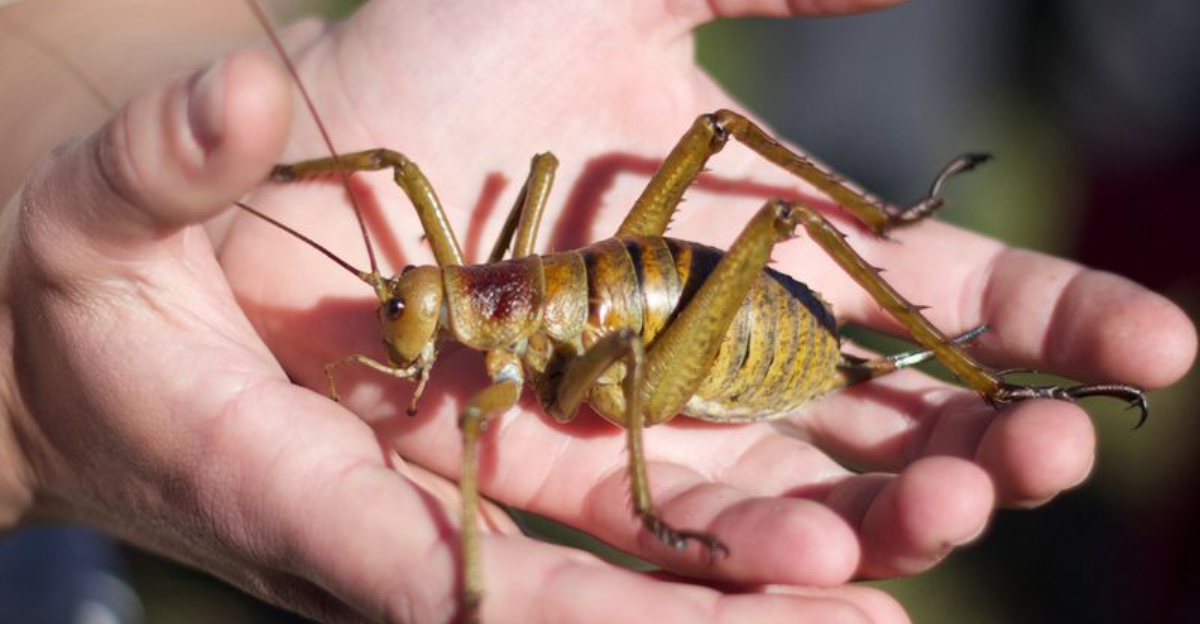
Imagine stumbling across a bug so big, it rivals the size of a small bird – welcome to the wild world of the giant weta.
Native to New Zealand, this massive insect looks like it wandered straight out of a sci-fi movie. With heavyweight status in the bug world, it’s full of surprises you’d never expect from something with six legs.
Get ready for some jaw-dropping facts about one of the world’s largest and weirdest insects!
1. Giant Weta’s Weight

Weighing up to 2.5 ounces, the Giant Weta outmatches most birds in size. This hefty critter, native to New Zealand, is often compared to a sparrow, making it one of the largest insects in terms of mass.
Its impressive weight is due to its large body, which stores energy for survival in its environment.
2. An Ancient Lineage
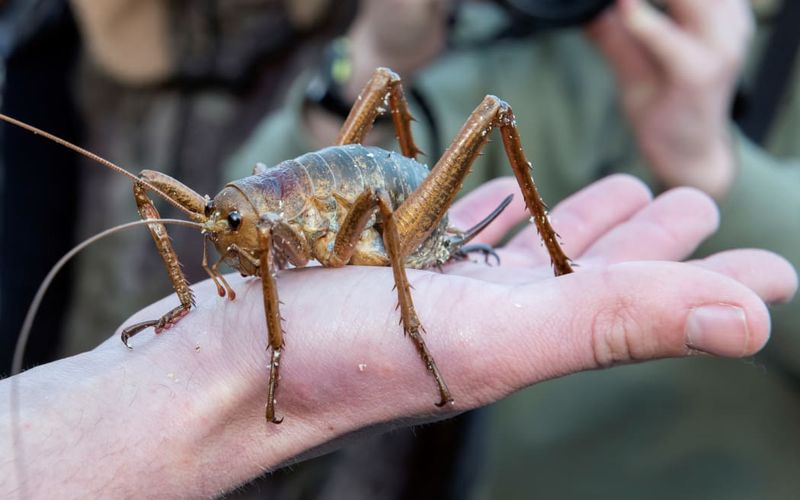
The Giant Weta’s roots trace back to prehistoric times. These remarkable bugs have survived for millions of years, with fossils dating back to the time of dinosaurs.
Their primitive features have changed little, making them true living fossils, providing a glimpse into the ancient world.
3. Birds Can’t Prey On Them
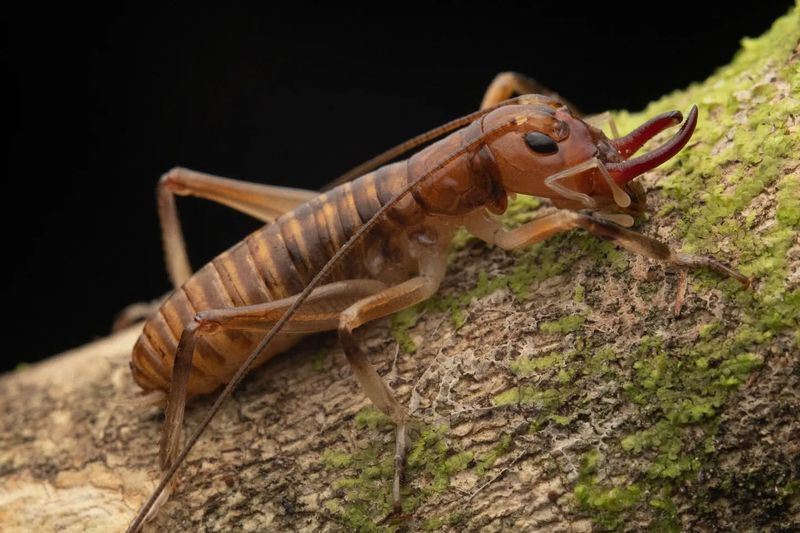
With their hefty size, Giant Wetas are not typical prey for birds. Their robust bodies and intimidating appearance deter many potential predators.
Living mostly at night, they have adapted to avoid bird attacks, showcasing their survival prowess in the wild.
4. A Nocturnal Lifestyle
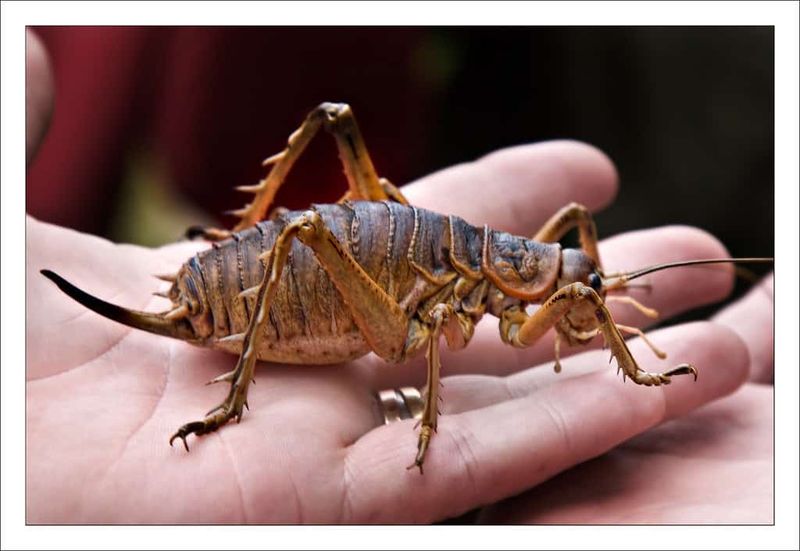
As night falls, the Giant Weta comes alive. This nocturnal creature thrives in the dark, foraging for food and evading predators.
Their nighttime activities are essential for their survival, allowing them to navigate their forest habitats with ease.
5. Native To New Zealand

New Zealand, a land of unique biodiversity, is home to the Giant Weta. This insect is endemic to the islands, thriving in forests and bushlands.
Its presence is a testament to New Zealand’s rich ecological heritage, making it a symbol of the country’s natural wonders.
6. Giant Weta’s Diet
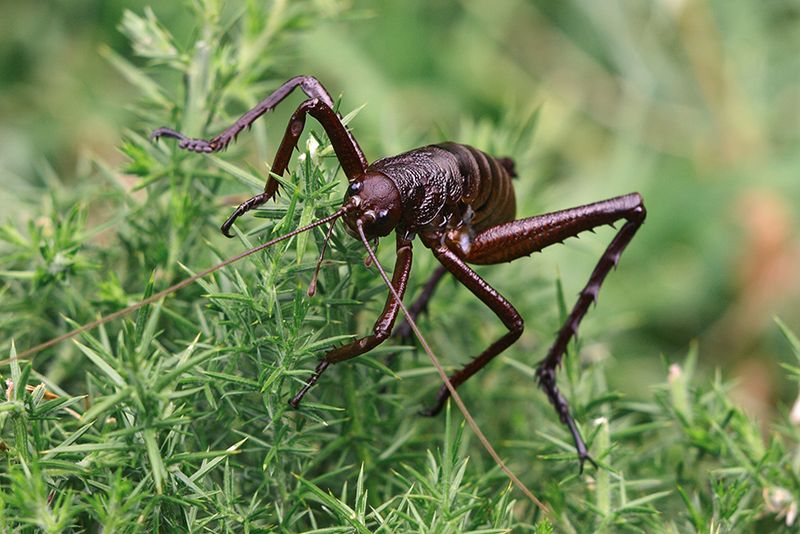
Despite their formidable size, Giant Wetas are gentle vegetarians. Their diet consists mainly of leaves, fruits, and other plant materials.
This herbivorous lifestyle supports their large bodies, providing the necessary nutrients for growth and survival in their natural habitat.
7. Unique Mating Rituals

Giant Wetas engage in fascinating mating rituals. Males compete for females by performing intricate dances and displays.
These rituals are essential for reproduction, ensuring genetic diversity among the population. The courtship behavior of these insects is as captivating as their size.
8. Giant Weta’s Long Lifespan

Giant wetas live surprisingly long lives for insects, sometimes lasting several years. That kind of longevity is rare and allows them to have a greater impact on their environment.
Extended time on Earth means more chances to reproduce and support the balance of their ecosystem.
9. The Role Of Temperature
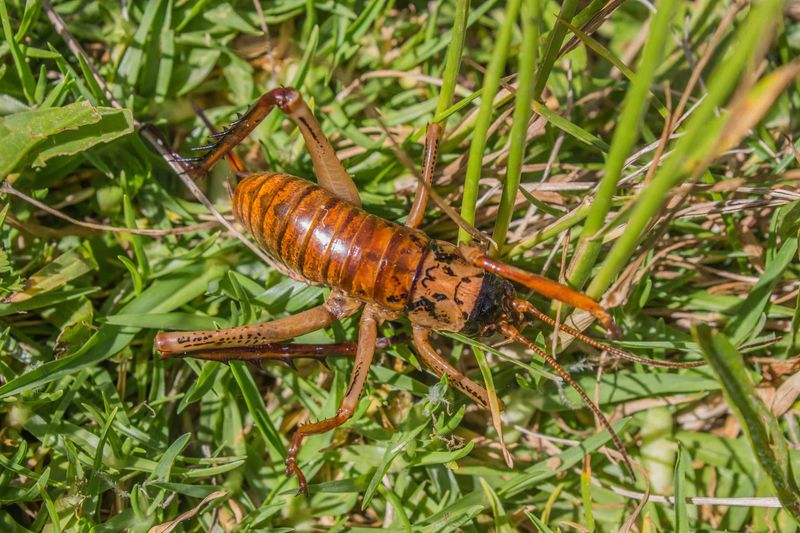
Temperature significantly impacts a Giant Weta’s life. These insects prefer cooler climates and are often found in higher altitudes.
Seasonal changes influence their activity, with warmer temperatures encouraging more feeding and movement. Their ability to adapt to temperature variations is crucial for survival.
10. Distinctive Appearance

Giant Wetas are not only large but also visually striking. Their bodies are adorned with unique patterns and textures, setting them apart from other insects.
This distinctive appearance helps them blend into their environment, providing camouflage from predators during the day.
11. Giant Weta’s Defense Mechanisms
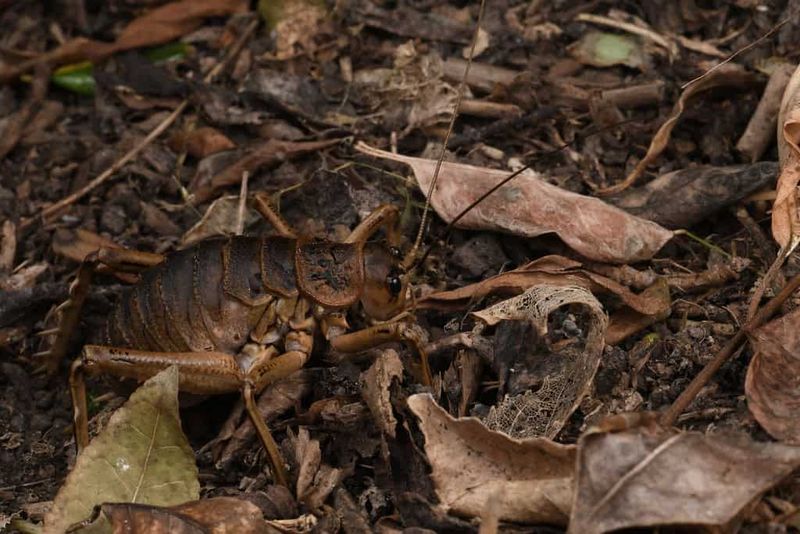
When threatened, Giant Wetas exhibit remarkable defense tactics. They use their large mandibles to fend off attackers, often accompanied by loud hissing sounds.
These defensive behaviors are crucial for deterring predators and ensuring their survival in the wild.
12. An Herbivore With A Sweet Tooth
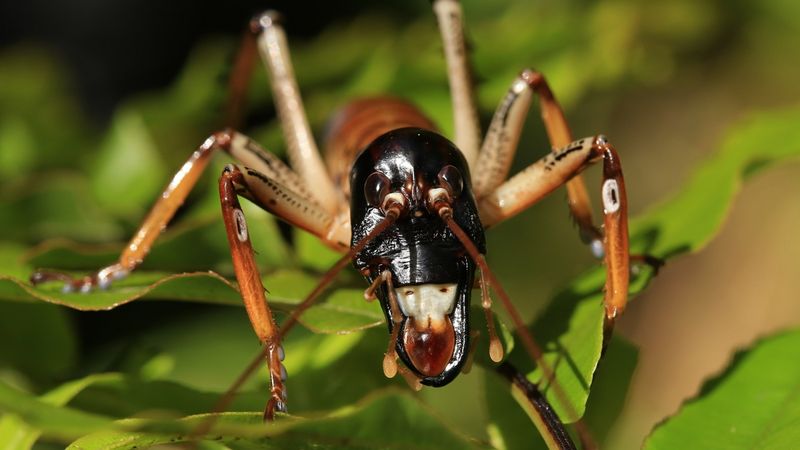
Sweet snacks are a favorite for giant wetas, especially juicy fruits. Alongside leaves, they often seek out sugary bites to fuel their daily routines.
A taste for fruit reflects how flexible and resourceful they are in finding energy-rich food in the wild.
13. Survival In Isolation
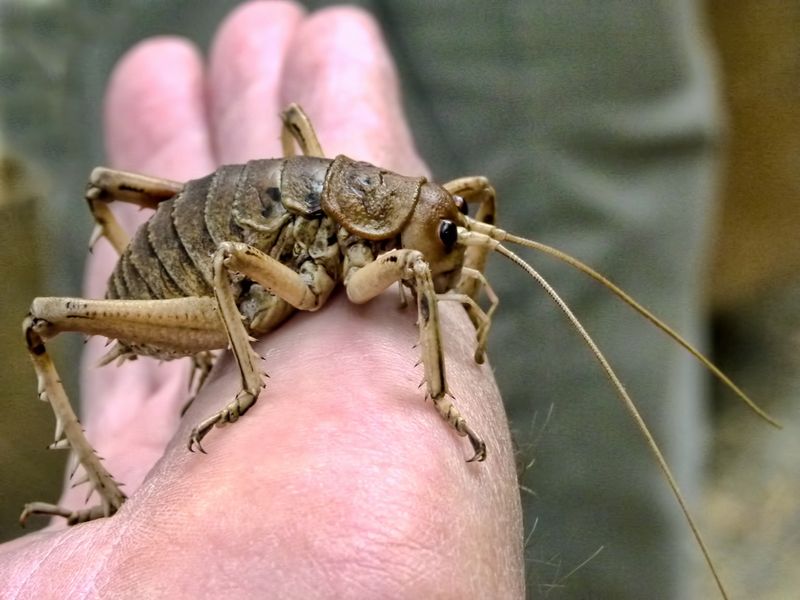
Isolation on New Zealand’s islands has allowed the Giant Weta to evolve uniquely. Free from many common predators, they have thrived in a relatively safe environment.
This isolation has contributed to their impressive size and unique characteristics, making them a fascinating subject of study.
14. Giant Weta’s Social Behavior
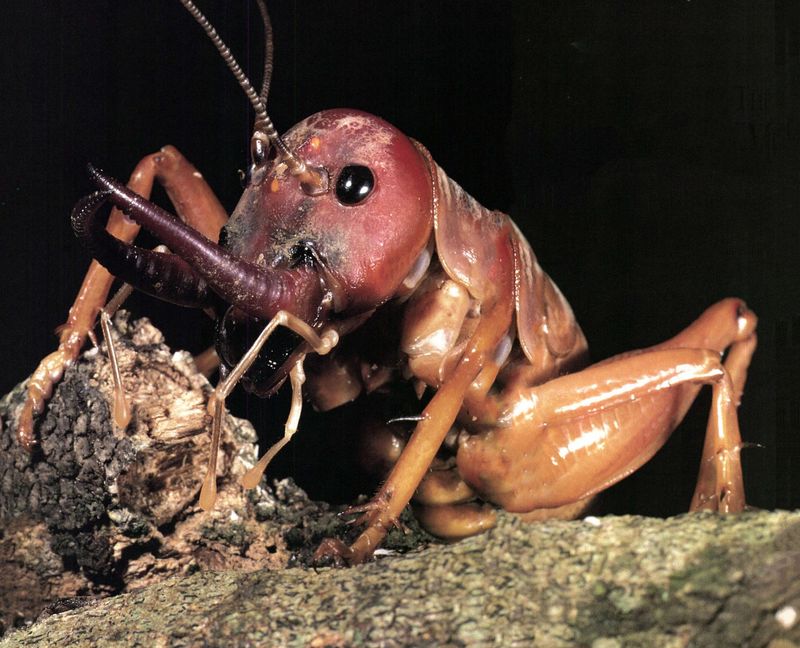
Despite their solitary nature, Giant Wetas exhibit interesting social behaviors. They often gather in groups, especially during mating seasons, showing a level of social interaction uncommon in insects.
These gatherings are vital for reproduction and genetic diversity.
15. Conservation Challenges
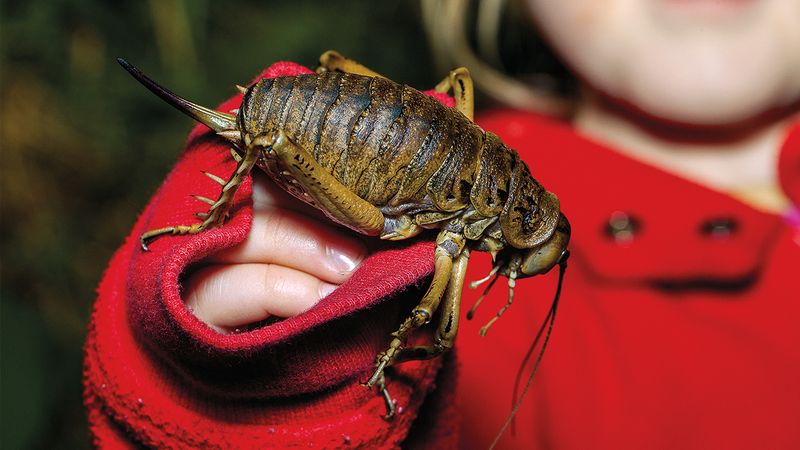
Conservation efforts are crucial for the Giant Weta’s survival. Habitat destruction and introduced predators pose significant threats.
Conservationists work tirelessly to protect these creatures, establishing reserves and breeding programs to ensure their continued existence.

